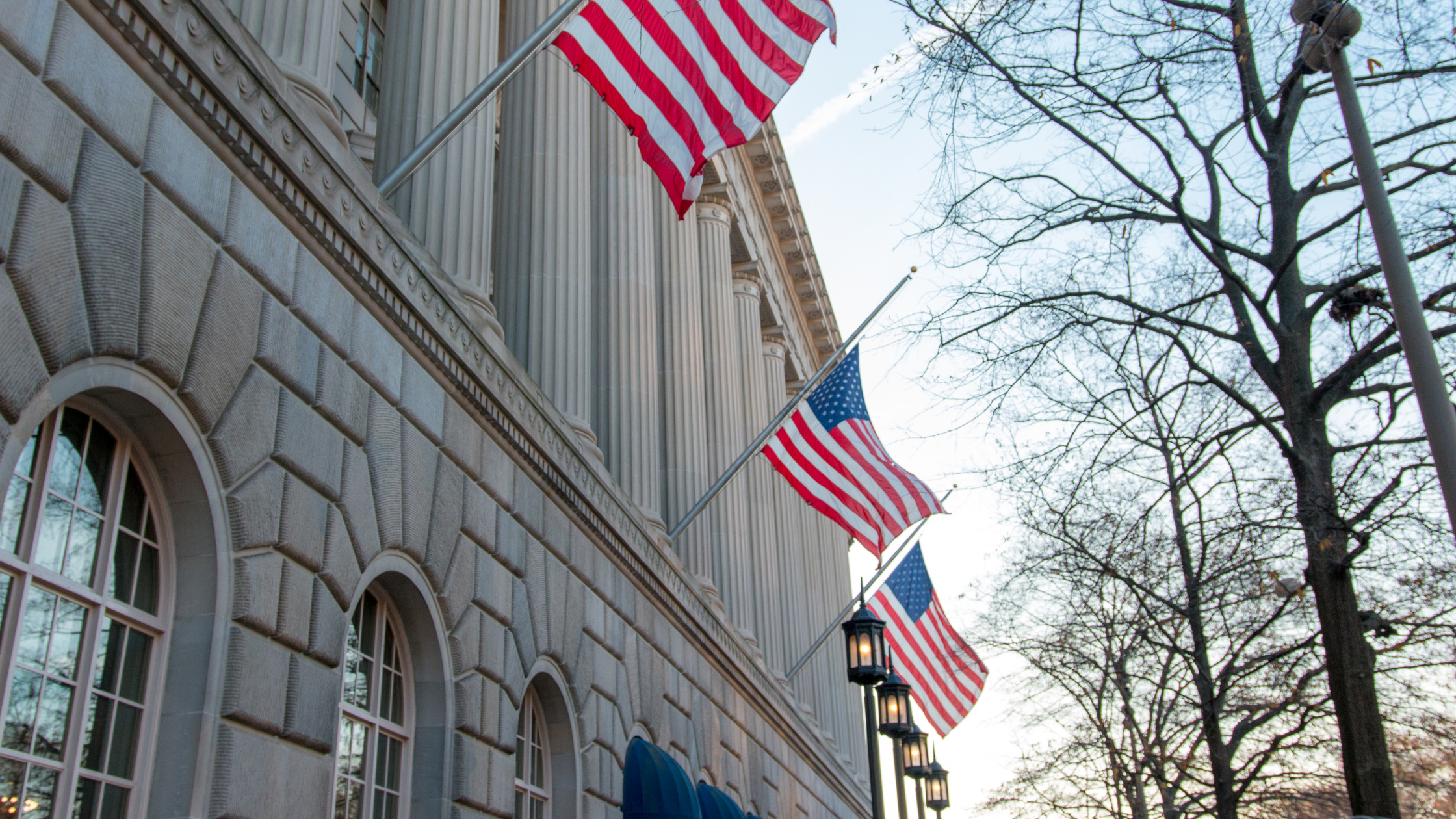 Federal buildings are an enduring symbol of our government and its commitment to the American people. To look and operate at their very best, they must undergo rigorous maintenance on a regular basis. One of the most important aspects of that maintenance is the application of appropriate coatings.
Federal buildings are an enduring symbol of our government and its commitment to the American people. To look and operate at their very best, they must undergo rigorous maintenance on a regular basis. One of the most important aspects of that maintenance is the application of appropriate coatings.
Today’s coatings go far beyond aesthetics to imbue a building with superior performance. The right choice of coating will protect a facility from rain, snow, heat, corrosion, and much more. No matter what kind of agency you work for, there is a coating that will add substantial value to your daily operations.
With public health coming into focus as a major issue, federal agencies are returning to the drawing board. New ways to protect personnel and the public are essential. While everyone should do their part to keep the office sanitary, coatings are the key to providing passive protection everybody benefits from.
Microbicidal coatings are rapidly becoming the leading option for keeping federal facilities safer.
Microbicidal Coatings Provide Years of Ongoing Protection from Common Pathogens
While an antimicrobial coating can inhibit the spread and growth of pathogens, only a true microbicidal coating actively destroys specific pathogens that come in contact with the surface. Combined with your existing sanitation policies, microbicidal coatings defend your workplace from the spread of disease.
Microbicidal coatings are ideal for healthcare settings and food service areas where a single infection can quickly spread to cause dozens of cases. Used correctly, microbicidal products on interior walls lower the overall bacterial load, contributing to reduced transmission of certain illnesses.
This is especially helpful for older people and those with compromised immune function. Offices that provide guidance and benefits to the elderly, such as Social Security and Veterans Affairs, may benefit – especially in situations where small, high-occupancy waiting rooms are the norm.
Even in relatively low-risk environments, microbicidal coatings are effective in protecting the public. You never know when someone may cough, sneeze, or fail to wash their hands when it would be advisable. Lower infection rates keep morale high and prevent absenteeism from illness in the workplace.
Sherwin-Williams Paint Shield Stands Out for Microbicidal Applications in Federal Buildings
If you are renovating or updating a federal agency, it makes sense to use products that have passed strict federal scrutiny. Sherwin-Williams became the first in the industry to deliver a microbicidal paint that can pass Environmental Protection Agency standards: Its highly acclaimed Paint Shield product.
Paint Shield has undergone rigorous testing to verify its claims: Within two hours, it destroys 99.9% of several common bacteria that come into contact with the painted surface.
Bacteria affected by Paint Shield include:
- Staph
- MRSA
- E. coli
- VRE
- Enterobacter aerogenes
Many of these bacteria are associated with rapid onset of digestive infections that can be severe. MRSA and E. coli in particular are known for causing illness with very low bacterial exposure. Even in cases where illness does not become serious, performance is greatly inhibited and bed rest is often necessary.
Older federal buildings in particular are vulnerable to a “domino effect” where a single illness influences many people. Throughout the workday, employees may come in contact with dozens of colleagues and outside visitors. Microbicidal coatings can help to control adverse situations before they start.
Microbicidal Coatings Protect Federal Workers from Invisible Costs of Illness
As reported by the CDC Foundation based on Harvard Business Review research, employees who come to work sick create $150 billion to $250 billion in avoidable costs every year. Separately, Forbes Magazine estimated yearly costs of workplace illness at $576 billion in 2012, a figure that is sure to have risen since.
While nobody can prevent all illnesses, and employees may not always be in a position to stay home until they recover completely, microbicidal coatings may make the difference between illness and good health several times a year. Over the life of your facility, the savings can be substantial.
The business case for microbicidal coatings is clear. But does it work within your budget?
Microbicidal coatings are not substantially more expensive than typical paints, especially when they are sourced through commercial painting contractors with federal project experience. However, they must be applied carefully, allowed to dry, and appropriately maintained as time goes on.
The investment associated with high quality coatings is relatively modest – but be on guard against schedule and cost overruns that can inflate the final price tag. OSHA-compliant contractors should be willing to undergo vetting, including a full RFP process as necessary, to ensure they meet your needs.
As materials science advances, more sophisticated coatings are becoming available. These have the potential to enhance performance of federal buildings while allowing them to stand the test of time and serve future generations. Microbicidal coatings are a sure step toward a facilities strategy that does it all.
{{cta(‘9356bbf0-d14e-480d-988b-2427a4af661a’)}}






